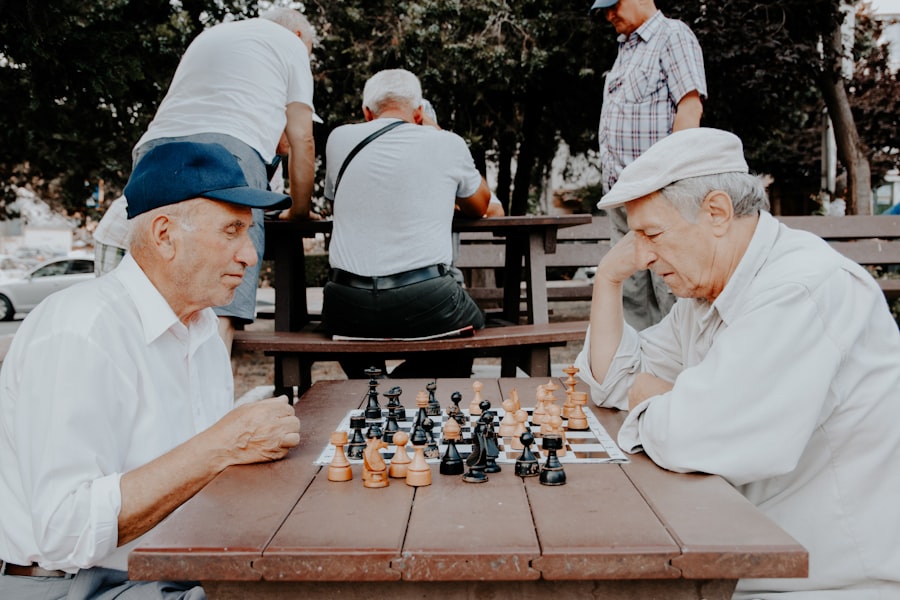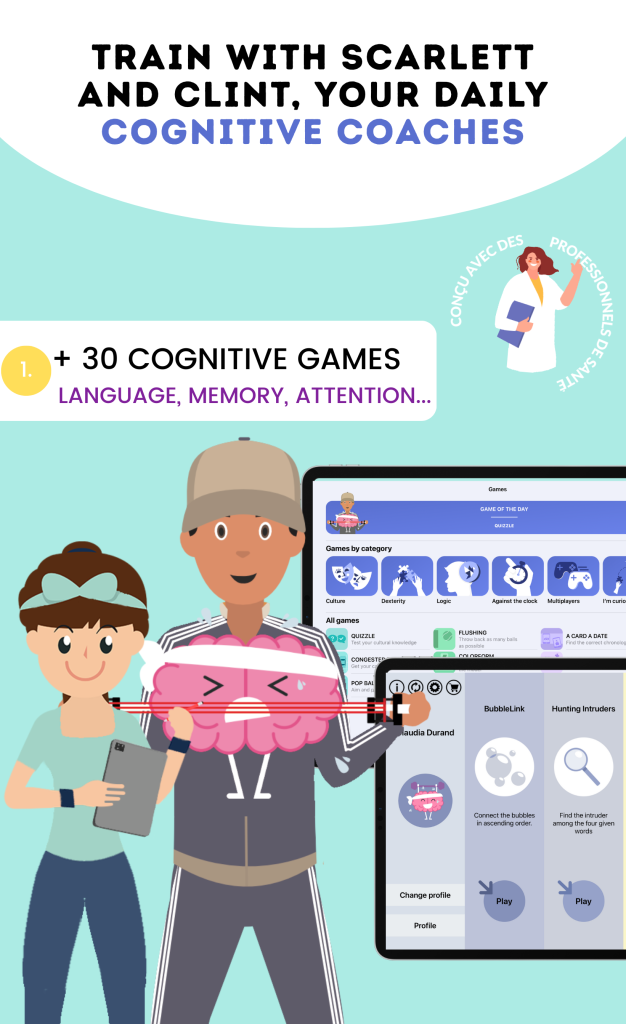Communication with the elderly can sometimes be a challenge, particularly due to generational differences and the difficulties they may encounter in using new technologies. Elderly people are often less familiar with social media and new forms of communication, which can make it difficult to maintain a connection with their family and friends. However, it is important to find ways to overcome these obstacles in order to maintain effective communication and ensure that the elderly remain connected and included in society.
The Benefits of Social Media for Communication with the Elderly
Social media is not just a tool for entertainment or platforms for younger generations. They can also play a crucial role in communication with the elderly, facilitating their interaction with loved ones and overcoming physical and generational barriers. Here are some major benefits of social media for improving communication with the elderly:
1. Strengthening Family and Friend Connections from a Distance
Social media allows the elderly to stay in touch with their family and friends, even if they are separated by long distances. This offers a unique opportunity to maintain close relationships with their loved ones, which can contribute to their emotional well-being.
- Sharing Precious Moments: The elderly can share photos, videos, or statuses about family events, vacations, or simply moments from their daily lives.
- Real-Time Interaction: They can respond to instant messages and comment on their loved ones’ posts, making communication more immediate and interactive.
Concrete Example: A grandmother living in another city can see photos of her grandchildren, react to their messages, and even participate in group discussions via WhatsApp or Facebook.
2. Accessibility and Simplicity of Platforms
Many social media platforms are now designed to be intuitive and easy to use, even for those who are not familiar with technology. Simple interfaces and dedicated apps like Facebook, Instagram, or WhatsApp offer tailored features, making their use accessible to the elderly.
- Accessibility on Multiple Devices: Whether on a smartphone, tablet, or computer, social media is easily accessible, allowing the elderly to choose the device they feel most comfortable with.
- Improvement of User Experience: Interfaces are often simplified with options such as zoom, contrasting colors, or large icons, which facilitate navigation.
Concrete Example: A smartphone with a simplified interface like “GrandPad” allows the elderly to easily navigate between video calls, photos, and messages.
3. Strengthening Intergenerational Relationships
Social media can help bridge the gap between generations. By allowing younger generations to easily interact with their elders through tools they are familiar with, they promote mutual understanding and the exchange of ideas.
- Facilitating Intergenerational Communication: Young people can initiate conversations with their grandparents, share funny videos or memes, which helps maintain light and engaging conversations.
- Mutual Learning: The elderly can learn to use digital platforms with the help of their grandchildren or children, which strengthens family bonds and allows for a better understanding of new technologies.
Concrete Example: A young adult can explain to their grandmother how to use an app like Instagram to share her gardening photos, making this platform accessible and fun for her.
4. Reducing Social Isolation
Social isolation is a common issue among the elderly, especially for those who live alone or are geographically distant from their loved ones. Social media allows breaking this isolation by providing means of regular communication.
- Access to Online Communities: The elderly can join interest groups or online forums that allow them to discuss with people who have similar passions or concerns.
- Facilitating Connection with Friends and Family: In addition to staying in touch with immediate relatives, the elderly can also reconnect with childhood friends, former colleagues, or neighbors, facilitating virtual reunions.
Concrete Example: A retired person passionate about gardening can join a Facebook group where they exchange tips and tricks with other enthusiasts, while maintaining social ties from a distance.
5. Cognitive Stimulation and Technological Learning
Using social media can also provide significant cognitive stimulation for the elderly. Learning new technologies and navigating these platforms can help keep their minds active and curious.
- Learning New Skills: By learning to use social media, the elderly can develop important digital skills that help them stay engaged and connected in an increasingly digital world.
- Reducing the Feeling of Technological Aging: Elderly people who regularly use social media feel less excluded from the digital world and can more easily adopt other technological tools, such as video calls on Zoom or Skype.
Concrete Example: A senior who learns to create online photo albums on Facebook or to use features like Stories on Instagram develops new digital skills and feels more comfortable in a modern technological environment.
6. Easy Access to Information and Entertainment
Social media is not limited to communication; they also allow access to a multitude of informative and entertaining content. The elderly can follow pages, groups, or channels that interest them, thus enriching their daily lives.
- Following Interests: Whether for cooking recipes, health tips, local news, or hobby videos, the elderly can easily find relevant information on platforms like YouTube, Pinterest, or Twitter.
- Instant Entertainment: Videos, articles, and online discussions provide a pleasant way to pass the time and avoid boredom or isolation.
Concrete Example: A grandfather can follow DIY pages on Facebook, watch tutorial videos on YouTube to improve his woodworking skills, or even participate in online quizzes for fun and learning.
Tip #1: Tailor the Message to the Elderly’s Age
- Simplifying Language: The elderly may have difficulty understanding certain modern terms or specific expressions from younger generations. It is therefore essential to simplify the language, choose more familiar words, and avoid overly complex expressions.
- Cultural and Personal References: The elderly often have a wealth of experiences and memories that can be used to establish a stronger connection. For example, instead of focusing solely on modern concepts, it may be helpful to refer to events or objects familiar to their time.
- Concrete Example: Instead of saying “You need to activate your Bluetooth to connect your phone to the speaker,” you could say “You know, like when you use the cordless phone to talk without a cable, you just need to activate a similar function.”
Tip #2: Use Visual Aids to Facilitate Understanding
- Image and Video: The elderly may sometimes have difficulty understanding complex verbal explanations. Adding images, videos, or diagrams can help make the information clearer and more tangible.
- Using Visual Examples: For example, if you are explaining how to use an app, a step-by-step screenshot can be very helpful.
- Concrete Illustrations: When communicating via email or message, integrating photos of the objects or steps you are discussing (for example, an image of a device to use or steps in the form of diagrams) will make the message easier to understand.
Tip #3: Avoid Acronyms and Technical Terms
- Simplifying Vocabulary: Acronyms or technical jargon can create confusion. Instead of saying “I will share a PDF file with you,” you could say “I will send you a document that you can open on your computer or phone.”
- Examples of Simple Explanations: If you mention a feature like “cloud,” it is better to explain that it refers to “a secure place on the Internet where you can store your photos and documents, accessible from anywhere.”
- Accessibility of the Message: By adopting simple language, you avoid misunderstandings and promote better absorption of information.
Tip #4: Use Simple and Clear Language

- Short and Simple Sentences: Instead of using long and complicated sentences, it is better to break the message into small, easy-to-understand sentences. For example, replace “It is essential to synchronize your devices so that they are connected and work together” with “You need to connect your devices so they work together.”
- Logical Structure: When giving instructions, start with a simple introduction, follow with numbered steps or bullet points, and conclude with a summary to facilitate understanding.
Tip #5: Encourage Interaction and Participation from the Elderly
- Valuing Their Experience: The elderly often have a wealth of experiences. Encouraging their active participation in the conversation not only enriches exchanges but also strengthens their confidence.
- Open Questions and Exchanges: During a conversation, ask open-ended questions that encourage them to share their opinions and experiences. For example: “What do you think? Does this remind you of something?”
- Example of Interaction: During a video call, encourage Grandma to show you an object of her choice or share a story she finds important, making communication more dynamic and interesting.
Tip #6: Show Patience and Respect
- Active Listening: The elderly may take longer to formulate their thoughts, especially when it comes to new technologies. It is essential to be patient and not rush the exchanges.
- Repetition and Clear Explanation: If necessary, repeat the information or rephrase it so that the elderly person understands better. This shows respect for their pace and way of learning.
- Example of Patience: If your elderly parent has difficulty understanding how to use an electronic device, take your time, be reassuring, and guide them slowly through each step.
Tip #7: Use Communication Channels Suitable for the Elderly
- Choosing the Right Tools: The elderly may be more comfortable with certain means of communication. Some prefer phone calls, others text messages or even emails, while the more tech-savvy may appreciate video calls or instant messaging platforms.
- Considering Their Preferences: It is important to directly ask the elderly person which channel they prefer for discussion, to ensure effective communication.
- Example of Adaptation: If Grandma prefers phone calls to video conferencing, respect that, but you can also guide her to simple tools like Skype or Zoom if she wants to try them.
Conclusion: The Benefits of Effective Communication with the Elderly via Social Media.
In conclusion, communication with the elderly can be a challenge due to generational differences and the difficulties they may encounter in using new technologies. However, by using social media and following certain tips, it is possible to overcome these obstacles and maintain effective communication with the elderly.
Social media offers an accessible and easy-to-use platform to stay connected with the elderly, allowing them to share photos, videos, and instant messages. Moreover, they can help overcome communication barriers between generations, fostering better mutual understanding.
By tailoring the message to the elderly’s age, using visual aids, avoiding acronyms and technical terms, using simple and clear language, encouraging interaction and participation from the elderly, showing patience and respect, and using communication channels suitable for the elderly, it is possible to improve the quality of life of the elderly through effective communication.





